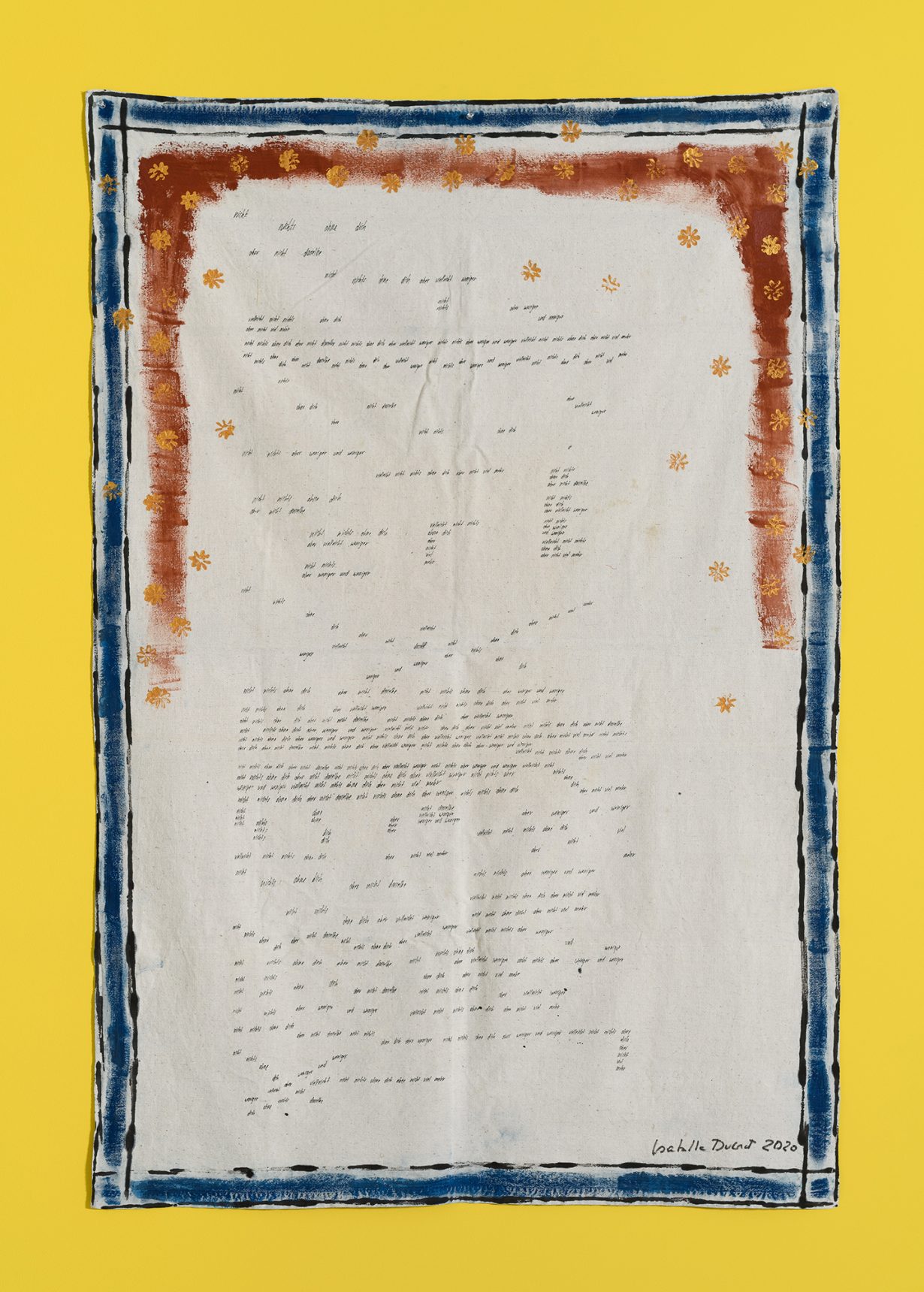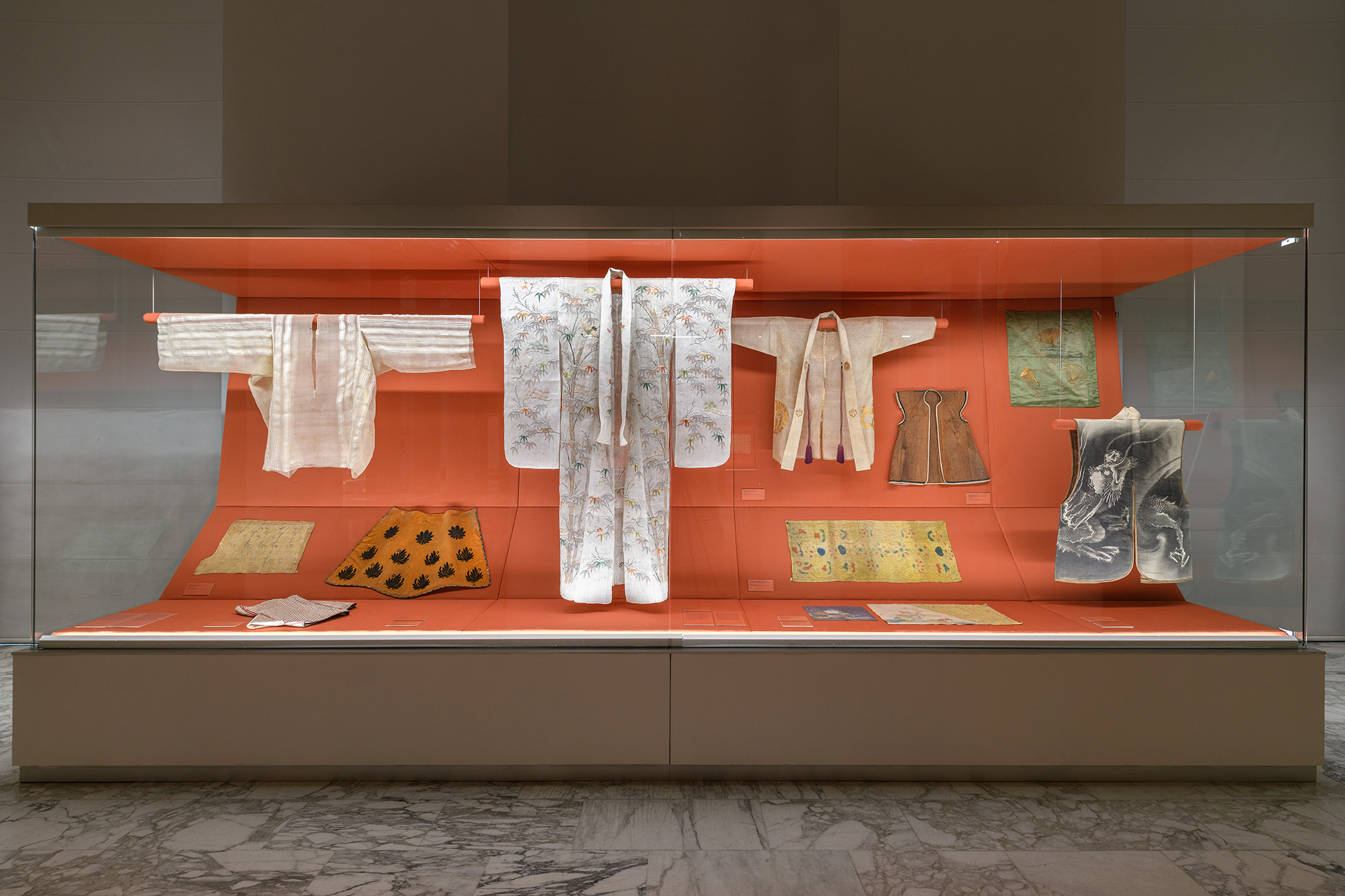WEAVING IS HUMAN at Museo delle Civiltà, Rome recontextualises the museum collection’s often fraught history along the lines of an artist finding late acclaim
Isabella Ducrot and the Museo delle Civiltà in Rome are both experiencing a renaissance. Although known in her native Italy since the 1990s, the nonagenarian Rome-based artist has only recently gained international fame, in part due to the artworld’s attempts to redress gender inequalities, and the ensuing reevaluation of women artists. Despite working for over four decades – shifting seamlessly between abstraction and figuration in her paintings, drawings, collages and fabric works – Ducrot has only just had her first international solo museum show, at the Consortium, Dijon, this summer.
Meanwhile, since 2022, the encyclopaedic Museo delle Civiltà, which holds over two million artefacts and documents, has embarked on an ambitious decolonisation programme, collaborating with contemporary artists, thinkers and writers to recontextualise the collection’s often fraught history. In WEAVING IS HUMAN… Ducrot and the museum’s curators have collaborated to offer a meditation on fabric, charting a history of textiles from prehistory to modern times, juxtaposing works from the collection with Ducrot’s own works made from the rare fabrics she has collected. Ducrot, writing in her book The Checkered Cloth (2019), thinks the invention of weaving deserves special attention: dating back to the Neolithic era, it was ‘not the result of a defensive gesture, nor a violent action, but of a moment of reflection, a project which envisaged something absolutely new, based on calculations and formulas’.
Ducrot’s works form the fulcrum of the show, taking over the central atrium of the Museo’s cavernous buildings, pinned onto bright yellow display panels hung from the ceiling or suspended directly into the space. Turbante (2015), a gorgeously colourful monumental work on paper, takes centre stage: its 11-metre-long silk turban, glued to an equally long roll of paper that, unravelling from the ceiling onto a low platform below, is painted in a vertical chevron pattern with pigments the colours of a sunset sky.

Ducrot’s works find formal echoes in the items from the museum’s collection: Abito con cornice gialla (Dress with Yellow Border, 2023), a long-sleeved kimono-style chequered dress stitched onto a large rectangle of fabric, finds affinities with the exquisite nineteenth-century silk Japanese Katabira woven with golden thread, or the simple woman’s cotton dress from the Lima culture (200–650 CE), woven in a pattern of checks and bands.
Ducrot’s almost mystical reverence for weaving – she has often spoken of the space between weft and warp as being animated by a mysterious energy – is explored in a handful of her works, including the Bende Sacre series (Sacred Bandages, 2012–18), which float in the space’s four corners. These simple Tibetan scarves, used as votive offerings in Buddhist monasteries, are displayed on paper, their gridlike woven pattern transformed into solemn abstract art, their fragile forms presented as if they were sacred relics. Ducrot has painted a frame directly onto each work in the series, as though highlighting its new status as artwork. Her ethereal Arazzo Rilke (2020), pinned to a panel, is evocative of a meditation or prayer, its small, repetitive cursive words written in ink across the fabric crowned by tiny, gold-colour flowers and terracotta pigment. In front of it, in a glass cabinet, is the intricately decorated white linen Tılsımlı Gömlek (Talismanic Shirt, Ottoman, 1650). Covered in minute Arabic calligraphy, this talismanic shirt was intended to protect its owner from harm.
These vastly different textiles from the collection range in material, intricacy and purpose, but all speak invariably of a shared and ongoing history: of spinning, colouring, weaving; of the cultures that created it, but also of trade, travel and colonisation. One of the most astonishing pieces on display is a fragment of Bronze Age fabric. The edges are frayed, so we can see the individual pieces of thread that someone, millennia ago, wove.
WEAVING IS HUMAN: Isabella Ducrot… and the textile collections of the Museum of Civilizations at Museo delle Civiltà, Rome, through 16 February
From the January & February 2025 issue of ArtReview – get your copy.
